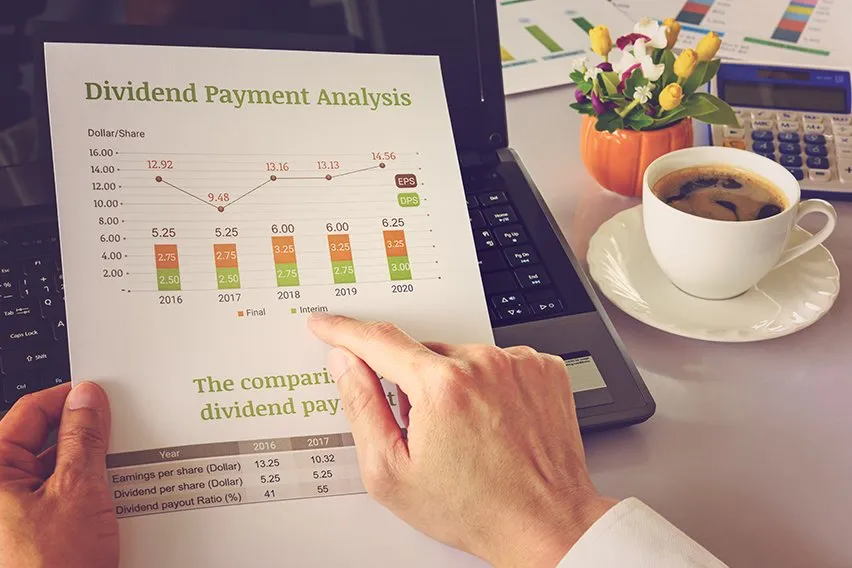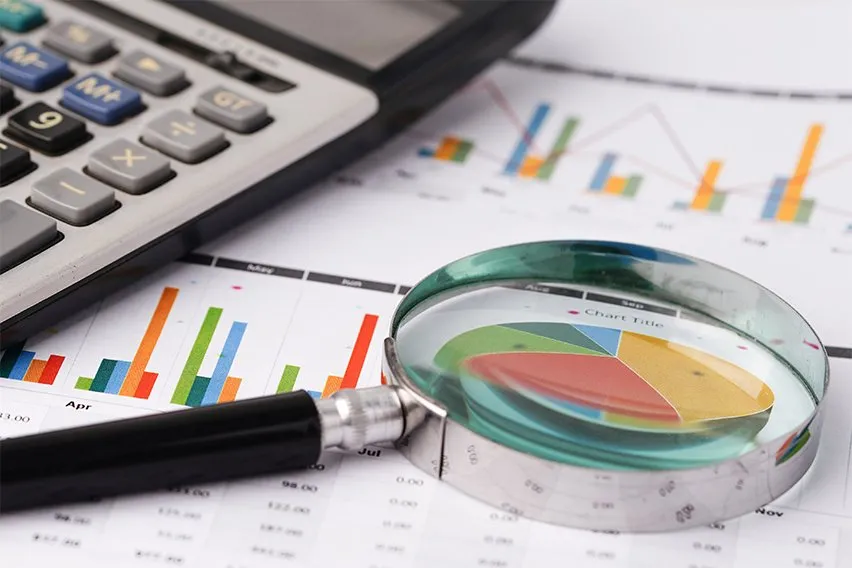What Is Cash Flow? Definition, Importance & Examples

Cash is an important part of any business. It’s what makes the gears turn, and it lets your business grow. As such, having a good cash balance is a must when you want to keep things moving. The best way to keep the cash coming is to understand cash flow. Cash flow can be positive and it can be negative. Cash flows in and out of businesses. Maintaining the right processes and procedures can help keep your business on the positive side of things. Learn all about cash flow and why it’s important below.
Here’s What We’ll Cover:
Three Different Types of Cash Flow
Understanding Cash Inflows and Outflows
What Is Cash Flow?
Cash flow is the increase or decrease of money in a business, institution, or person. When discussing cash flow in finance, the definition narrows, though. In finance, cash flow describes the amount of cash that is generated or consumed in a period of time. This time period is typically the same as the accounting period.
Cash flow is varied, and there are many different types. The key to a successful business is being able to use different cash flows for financial analysis. This is the ultimate goal of any documentation or financial data in business, of course.

Three Different Types of Cash Flow
When discussing cash flow, there are generally three types that you need to know about. These types of cash flow all differ in origin, as well as analysis.
Cash From Operating Activities
Cash from operating activities is the most common type of cash flow. It is any cash generated from a company’s core business activities. It is also any money spent on the production of goods, or any expenses related to business operations. This information is always found in a company’s statement of cash flows. It does not include any cash made from investing activities.
Cash flow from operations determines whether or not a company has enough money to pay its bills. It also indicates whether or not a business can go on operating. This means that there need to be more operating cash inflows than there are cash outflows. This is what allows a company to remain viable as the business continues to go on.
Cash flow from operations is calculated by subtracting operating expenses from sales. Sales may also be referred to as revenue. When the math results in a positive balance, it is called a positive positive cash flow. Should the costs of expenses outweigh the money made by sales, it is a negative cash flow.
If a company has a positive cash flow from operations, it can indicate that a company is ready to expand. On the same note, if a company has a consistent negative cash flow it can indicate that they need external financing.
Cash Flow From Investing Activities
Cash flow from investing determines how much money has been made or spent on investing activities. This is a snapshot over a specific time period, as any cash flow analysis is. Examples of investment include purchases of speculative assets or investments in securities. It may also represent the sale of securities or assets.
When reviewing cash flow from investing, a negative cash flow is not always a bad thing. Many investing activities may result in a negative cash flow. This is because the investments being made are long-term. A good example of this is an investment into research and development (R&D). Often, R&D leads to positive cash flow in the long run. This is because it provides business insight and discoveries that can be used to make better decisions.
Cash Flow From Financing Activities
This may also be referred to as financing cash flow. It shows the net slows of cash that is used to fund a company, as well as its capital. This may include transactions involving issuing debt. It may also relate to equity and dividends being paid out. Cash flow from financing activities is useful to investors. It can relay a company’s financial strength, as well as how its capital structure is managed. This may help an investor make an investment decision. Overall, you want to be able to impress investors so that they will make the decision to invest.
Understanding Cash Inflows and Outflows
When you’re discussing cash flow, there are two different ways that cash can move. This refers to cash inflows and cash outflows. Knowing the difference between the two can help you stay on top of your cash.
Cash Outflows
Cash outflows are any transactions in which money is leaving the business. These can be a number of things. When you’re discussing cash outflows, you may be referring to any of the following transactions:
- Operating Expenses: Any expenses required to run the business. This can be as simple as supplies and monthly expenses, like utilities and rent. These are also called business expenses.
- Debt Repayment: Paying off any debt is considered a cash outflow.
- Various Liabilities: Accounts payable are considered an outflow. They are representative of money owed to other businesses, or other expenses incurred.
Cash Inflows
Cash inflows are what a business needs to continue to operate. These are the ways that your business is making money. For the most part, this is done through sales and generating revenue. However, there are other transactions that bring money into a business. Check them out below:
- Sales: This is the main contributor to a business’s cash inflows. These are recurring forms of inflow, and are acquired through business activities.
- Interest: When a company sells something on credit, they can charge interest on it. Interest can also be earned through investments or investing activities.
- One-Time Sale of Assets: This happens when a company sells any asset. For the most part, it occurs when physical assets are sold, like property or equipment.
Analyzing Cash Flows
Cash flow is one of the most important parts of any business. As such, it is analyzed often. One of the three main financial statements for any business is the cash flow statement. This statement reports on a company’s use and generation of cash. It is used to review a specific period of time.
Who Uses the Cash Flow Statement?
The cash flow statement is used by various parties. Corporate management and analysts use the statement to understand how cash flows in a business. They want to know how they’re making their money, as well as how they’re spending it. Having an intimate knowledge of these processes can lead to a better ability to make money. It can also help a business owner find where spending can be reduced. It also forecasts whether or not a company will be able to pay its debts.
Investors look at the cash flow statement with similar intent. For the most part, they want to know if a company can generate positive cash flows. When considering a company for investment, investors will look at several statements rather than one. A single cash flow statement may not tell the whole picture. A business needs to be able to show an ability to make money over time without overspending.
Are There Downsides to the Cash Flow Statement?
There are downsides to the cash flow statement. It doesn’t necessarily show a business’s total expenses. This is because not all expenses are paid right away. Many businesses use the accrual method of accounting. When doing so, they incur expenses without paying them right away. While the liabilities are recorded on the ledger, they aren’t marked as cash outflows until payments are made. These payments may not occur until a later accounting period. They may occur far into the future. As such, the cash flow statement is not the end-all-be-all of financial statements.
How to Look at a Cash Flow Statement
When you’re looking at a cash flow statement, there are a few things you’ll want to look at right away. The first thing you should look at is the bottom line item. This is the net increase or decrease in cash and cash equivalents. Cash equivalents are the assets that can immediately be turned into cash. They may be referred to as liquid assets. This is how much cash a company has on hand at the time of the statement.
This information can also be found on the balance sheet. It’ll be listed under the current assets section. If you take the current statement’s cash and cash equivalents, you can subtract the same figure from the previous period. This should provide you with the final line item on the cash flow statement.
The Statement of Cash Flows Should Be Used With Other Statements
To get the full picture of a business, the statement of cash flows cannot be looked at alone. In reality, you have to look at all three of the core financial statements. We’re going to explain what each one indicates, and why the cash flow can’t be reviewed independently.
- Cash Flow Statement: Essentially the corporate chequebook. It is used to reconcile the balance sheet and the income statement. It records all of a company’s transactions. This includes inflows and outflows. It tells analysts if all of the revenues recorded on the income statement have been collected.
- Balance Sheet: A snapshot of a company’s liabilities and assets. This information is only relevant for the time period it relates to. Because liabilities and assets can be so volatile, this is not enough to make decisions from.
- Income Statement: Indicates profitability over a specific time period. The income statement is, like the balance sheet, a snapshot.
To understand the financial health of a business, all three statements are needed. However, to determine a company’s cash position, the cash flow statement or a balance sheet can be used. They can be looked at independently to provide information about cash.

Why Is Cash Flow Important?
Cash flow is incredibly important to a business. This is especially true when you’re referring to small businesses. The reasons that cash flow is important to a small business are listed below.
Planning and Decision Making
When you understand the way your cash is flowing, you can better plan for your business. When you don’t know where your cash is being generated you can’t properly plan. With an accurate cash flow statement, you’ll know exactly where you stand financially. Any plans or decisions you make on behalf of your business need to be backed up. This can be done with the information provided by a cash flow statement, or cash flow analysis. While you may feel that cash flow is strong, the statement may say otherwise. This can prevent you from making costly mistakes.
Expense Management
Being able to see where your cash is flowing, you manage expenses effectively. The last thing any business owner wants is to haemorrhage cash. This can bleed even the strongest business dry. The last thing you want to do is overspend and underperform. Managing expenses is easier with an understanding of cash flows.
Expansion
If you’re watching your cash, you’ll know when you can afford to expand. While expansion is a large expense, it also increases your cash flow. When your business’s cash flow is strong enough to allow for expansion, it means that you can do so safely. Without the confidence of a strong cash flow, expansion should be avoided. Otherwise, you may overextend your business.
Generating Investments
Investors want to put their funds into a business with a strong cash flow. If you’re looking for people to invest in your business, you’ll need to know everything about your cash flow. They’ll be looking for a company that’s well versed in the way that they make and spend money.
Key Takeaways
Without strong cash flow, a business will remain stagnant. The goal is to create a strong enough cash flow so that your business makes a profit, rather than just breaking even. If you understand your inflows and outflows, you’ll understand your business better. If you can’t get enough of learning about finance and business, head over to our resource hub! We’ve got plenty of educational material for you to browse through.
RELATED ARTICLES

 Running a Company: What Is a Confirmation Statement CS01?
Running a Company: What Is a Confirmation Statement CS01? Dividend Payout Ratio: Definition, Formula & Calculation
Dividend Payout Ratio: Definition, Formula & Calculation What Is the Effective Annual Rate(EAR) & How to Calculate It
What Is the Effective Annual Rate(EAR) & How to Calculate It Capital Adequacy Ratio (CAR): Definition & Overview Guide
Capital Adequacy Ratio (CAR): Definition & Overview Guide Reducing Balance Depreciation Method: Explanation & Calculation
Reducing Balance Depreciation Method: Explanation & Calculation Why Is Cash Flow Important: 3 Major Reasons
Why Is Cash Flow Important: 3 Major Reasons